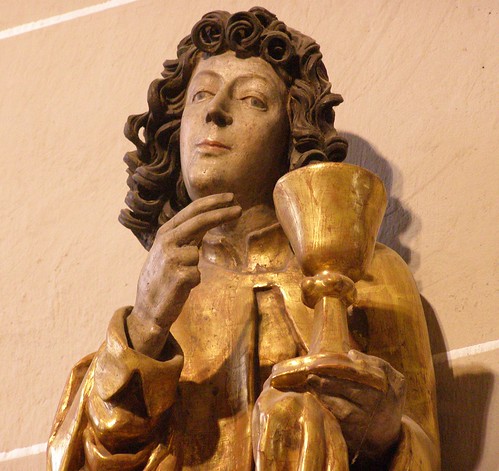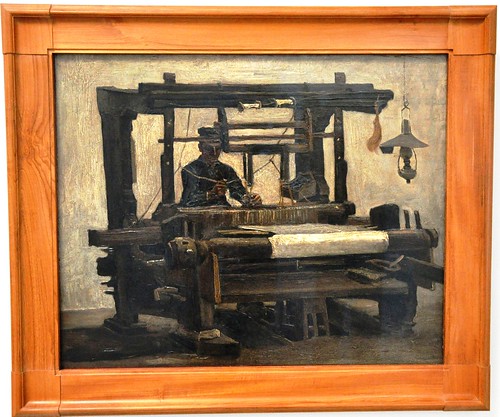Posts Tagged ‘Analysis’
Analysis of the Mona Lisa Painting

Leonardo Da Vinci was born and raised in Italy where the Mona Lisa was ultimately painted started in 1503. The style of the painting has long been cited as the forerunner of numerous styles of art, one of the true masterpieces in the history of world art.
A Description of Mona Lisa
Painting the Mona Lisa, Leonardo elevated himself into another station of artist, those that create new forms and perspectives. The relatively small painting of Mona Lisa manages to craft one of the most intense and effective art experience into a compact 30″ by 20 ½” frame. As for what kind of paint Mona Lisa was originally envisioned with, oils were used on poplar wood panel and have been restored numerous times. In recent years, curators at the Louvre have begun to worry that the painting appears to be breaking down more rapidly than in the past.
Leonardo places his model in the midst of the painting, using a pyramid design to center her. The fold of her hands forms the front of the pyramid and he uses the same glowing light for her breast, neck and face. His lighting is important as he uses it to create many of the geometric shapes – circles and spheres – that compose the painting. The form of the painting itself is very simple, a modification of the Seated Madonna, a form very popular during the 15th and 16th centuries for portraits.
What Does the Mona Lisa Mean?
He modifies the formula however, creating a sense of distance between the sitter and observer, mostly utilizing the arm chair on which she rests. Everything about her posture speaks reservation and silence. However, her eyes silently meet the gaze of the observer, drawing the viewer into her eye line. Everything surrounding her face is dark, bringing that much more focus to the light of her face and the attraction it provides. The overall effect is a kind of natural attraction to her, drawn in by her appearance, but it immediately contrasts with the distance Leonardo creates between subject and observer.
The landscape of the painting has long been pointed out as the first instance of portrait on landscape. Seated in the midst of an open loggia with what appears to be pillars on either side of her, a vast landscape stretches out towards an icy mountain range. The curves of her hair and clothing are emulated in the waves of the landscape and steady curves in the river and hills behind her. The question has thus arisen as to whether the Mona Lisa is as much a portrait as it is the depiction of an ideal. The harmony between the model and the landscape behind her creates a sort of natural order, all punctuated by the detail of her mouth and that world famous smile.
The Smile
For centuries, historians, psychologists, writers, and politicians have been trying to offer their own theories as to what the smile of Mona Lisa might signify. Freud characterized it as an allusion to an Oedipus complex (he was in love with his mother) in Da Vinci while others have stated that it is a sign of innocence and calm. The question of why the smile is seen in so many different ways has become almost as big of a research subject as the smile itself. There have been scientists who point out the special relations of the smile and how human sight picks up on them. Margaret Livingstone, a professor at Harvard claims that the painting is most effective when viewed peripherally. The smile is more effective when looking at her eyes for example.
In 2005 a computer program was used that analyzes facial expressions for emotional recognition to assign “emotional” values to the smile. That program found her to be 83% happy. Regardless of Da Vinci’s intentions, the smile of the Mona Lisa is one of the most enduring questions in all of art.
Mona Lisa Analysis Today
Because of the research and attention the Mona Lisa has drawn, more than a few dozen people have tried their hand at recreating it. Hundreds of copies reside in different art galleries around the world, some of which their owners believe to be the original. Recently, an internet phenomenon has arise in which a clever MS Paint user was able to make a video showing how to make the Mona Lisa on paint, the free graphics program bundled with Windows. Copying the Mona Lisa has long been a standard test of an artist’s tenacity and skill.
Related : Thai Food Good Health Painting Instructional Personal Transporter. At Segway underwear Home Mailbox
New Digital Analysis Data on JFK Head Wound Part IV.wmv
New data from a never before published digitial analysis of JFK’s head wound Soundtrack: Hendrix All Along the Watchtower; Call of Duty Montage 2
Tags : Painting Instructional Free Online Advertising Scubaequipment underwear /vikingcooktops/
Analysis of The Night Cafe – Vincent van Gogh

Image : http://www.flickr.com
Vincent‘s Two Cafes
“I often think that the night is more alive and more richly colored than the day.” Vincent van Gogh
Van Gogh‘s two ultra-famous café scenes comprise a study in opposites. Though both paintings employ Vincent‘s famous bold and furious brushstrokes and striking colors, the two pictures feel entirely different. One, “Café Terrace at Night,” is lovely and full of a frothy light, a night scene with stars outside the café on the Place de Forum. The other, “Night Café,” is, in the artist’s own words, “…one of the ugliest I have ever done,” a collection of clashing colors in the dreariest atmosphere.
Both paintings were made in Arles after van Gogh had lived and studied in Paris, and met various French impressionists. His own style became much lighter, less moralistic and more rife with color.
“Night Café” depicts the interior of a pool in Arles’ Place Lamartine. A more striking van Gogh canvas would be difficult to find, but no one could call this particular picture beautiful. It was the artist’s intention to show the lowest edge of humanity, without adornment, with as much impact and sincerity as possible.
There is no doubt he succeeded. Upon first glance, the viewer almost tends to glance away, as if burned. Fully two-thirds of the painting is the floor of the café, executed in sulphuric yellow with exaggerated lines of perspective that yank the eye into the painting. Next, a green billiard table, outlined in heavy black, stops us cold. Beside the table stands a figure in a light-colored coat, staring out at us without expression.
“I have tried to express the terrible passions of humanity by means of red and green,” van Gogh wrote. Yellow walls give on to blood-red walls that lead to an obtrusive green ceiling, and lining the walls are the locals at the bar tables, hunched over in late-night stupor. Lamps hang from the ceiling, surrounded by Vincent‘s wheels of curving yellow strokes.
A stark black and white clock depends in the background, impossible to miss. It is almost a quarter past midnight in this desolate scene. “Night Café” is one of Vincent‘s most powerful communications through art of the human condition and human emotions.
The other van Gogh café painting, “Café Terrace at Night,” shows the exterior of a café which still stands in Arles, though it was renamed The van Gogh Café and remodeled to closely resemble the painting which immortalized it. He painted this work in a flurry, using many of the same techniques he employed in his drawings. This is one of his most beautiful paintings, full of the light and peace he sought, but never found.
Perspective and warm complementary colors draw the viewer into the painting and beyond. The graphic texture of the street’s cobblestones invite the eye toward the little café itself, with its tiny white tables on the street, repeating the spheres of Vincent‘s stars hung in the Prussian blue sky. The awning and walls of the café, warm yellow, cut into the sky to enhance both colors and form the main composition.
Van Gogh loved the night. He writes, “I have a terrible need of–dare I say–religion…then I go outside at night and paint the stars.” He painted this night scene on the spot, at night, using no blacks. His father was a preacher and Vincent went into the ministry for a while. It was later that this artist, now a star himself posthumously, decided his ministry would be to find a way to give hope and consolation to humanity through his art.
Thanks To : Scubaequipment welcomeholidayservice